
views
Transferring Money Between Different Banks

Confirm you are not being scammed. If you have bank accounts in two different banks, then you can transfer money between your accounts with peace of mind. However, if you are sending money to someone else, then confirm their identity and why you are transferring money. Many scams involve electronically transferring or wiring money. For example, you shouldn’t send money to a family member in distress unless you have spoken to them and can confirm their identity. If you are elderly and don’t hear that well, then ask another person to speak to your family member. Never send money to someone claiming to be with the IRS. The government will never ask that you pay in this way. Avoid sending money to people you have only met online, no matter how close you feel to them. This is a common scam. Don’t give out your account information to someone you don’t know. They can use that information to access your bank account. If someone asks for your routing and account numbers, say “No.” Don’t pay for goods or services by transferring money directly into someone’s bank account. Instead, insist on paying with a credit card or with PayPal.
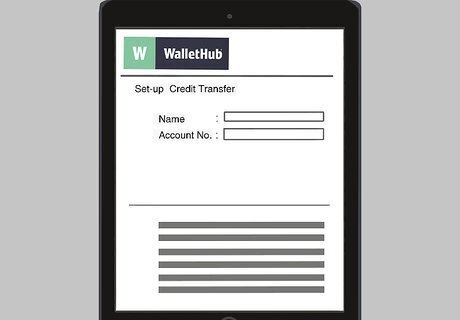
Send funds using a credit transfer. You can send funds electronically using an Automated Clearing House (ACH) transfer. With a credit transfer, you “push” money off one account to another. You can set up a credit transfer online, over the phone, or in person at the bank with the money you want to send. Get the recipient bank’s routing number and account number, which you can find on a check. You must link the accounts. If you use online banking, then look for an option that says “external accounts” or “add an account.” After the accounts are linked, you can send the money to the other account. The transfer must be processed by the next business day. Check with your bank about whether you are a charged a fee to send money this way.
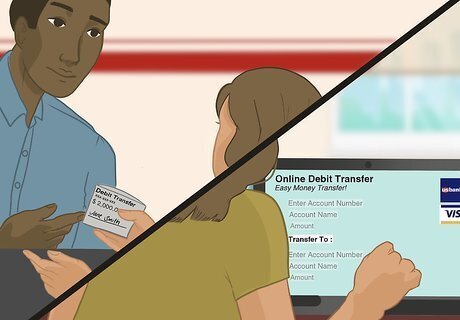
Receive funds using a debit transfer. A debit transaction is another type of ACH transfer. With a debit transaction, you request (or “pull”) money from another account. This type of transaction typically takes longer because the bank pulling the funds doesn’t know if the other bank has sufficient funds to cover the transfer. As with a credit transfer, you can schedule a debit transfer online, over the phone, or in person. Go to the bank account that you want to receive the money. Link up the account with the account that has the funds. Request the money. This type of transaction can take up to two or more business days.

Write a check. You can still transfer money using a paper check. If you want to transfer your funds between two different accounts you own, then write a check to yourself. Use a check from Bank A and then cash the check at Bank B. Remember to endorse the check on the back. You will write your name three times on the check: in the “make payable to” field, on the signature line, and on the back where you endorse the check. You might also be able to use a mobile check.

Request a check from the bank. If you can’t write yourself a check, then ask the bank for a check. They should be able to print one up and give it to you. You can then deposit the check in the other bank. Check if your credit union is part of the Shared Branching network. Visit https://sharedbranching.org/ to check. If it does, you can go into any branch in the country and request the check.
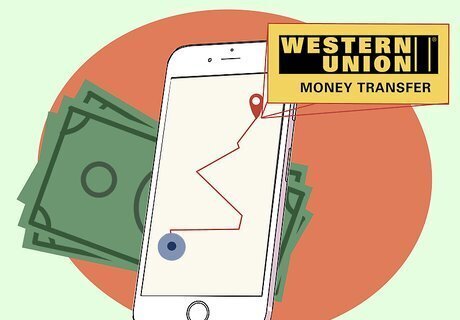
Make a wire transfer. A bank can wire money directly to another bank. You will need to pay a fee, which is usually around $40. Wiring money is one of the fastest ways to send money, typically arriving within the same day or hour it was sent. Contact your bank, which may have a form you can fill out in person, online, or over the phone. You need to have your bank account number, which you can find on your bank statement or check. You’ll also need the recipient’s full name and bank account number, bank name and address, as well as the bank’s transit number. In the U.S., the transit number is a nine-digit code. You can also wire money using Western Union. Find your nearest branch by looking in the phone book or online. To send to another bank, you will need to know the recipient’s bank name, Bank Identifier Code (BIC), International Bank Account Number (IBAN) if any, and the account numbers. Save your MTCN number, which is the tracking code. Western Union wires can take a couple of hours or a few days, depending on the circumstances. Always confirm the identity of the person you're sending money to. Phishing scams are becoming more common and more sophisticated, and it's not always easy or possible to get your money back in case of a mistake or a scam.

Transfer money using PayPal. You need to sign up with PayPal, creating a username and password. Then you need to link your bank account. Click on “Send & Request” and then “Link a bank or card.” Provide your bank account details. Click on the “Send & Request” tab. You will have to enter the email address or phone number for the person who will receive the money. Enter the amount and transaction type. Confirm your payment details.
Moving Money Between Your Personal Accounts in a Bank
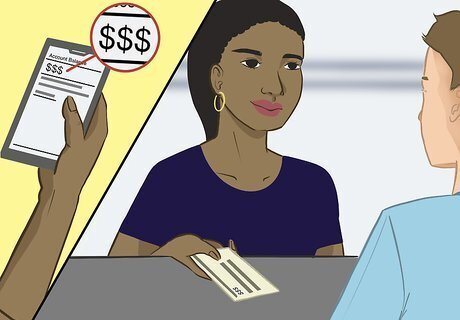
Ask a teller to transfer. The easiest way to transfer might be to stop into the bank and ask a teller to move some money around. Have your account information available and state how much you want moved and where. You might need to fill out some slips at the counter. The teller should be able to help you. You can say, “I’d like to move $50 from my checking account to my savings.” Always check your balance ahead of time so that you will be sure to have enough money to transfer.

Call to transfer funds. If you can’t stop into the bank, then think about calling. Ask the teller if you can transfer funds between accounts. Make sure you have your account numbers handy when you call. Simply identify yourself and state what you want: “Hi, I’m Melissa Jones and I want to move some money from my savings account to my checking. Do you need my account number?”
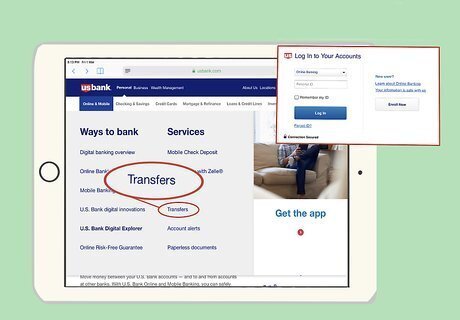
Transfer between accounts online. Online banking is a great service, and you should take advantage if your bank has it. You’ll need to create a username and password. Once signed in, you can usually transfer funds between accounts. Look for a link that says “Transfer Money” or something similar. There is usually a drop-down box. You can select the account you want to send money from and then select the account to receive the money. Enter in the amount and then the date you want the transfer to take place.
















Comments
0 comment